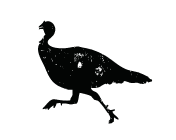Egyptian geese are native to central and south Africa

The Arkansas Game and Fish Commission has recently announced it's working with the University of Arkansas' Cooperative Wildlife Research Unit to study a population of nonnative Egyptian geese that are a threat to the state's natural species.
The invasive geese have escaped zoos and aviaries and have formed wild populations in many states.
On its Facebook page, the AGFC wrote, They have the potential to devastate crop species, and compete with native waterfowl for resources. The species can become very aggressive and chase native waterfowl and wildlife from their habitats. Because they often live and breed near commercial poultry and wild waterfowl, Egyptian geese have potential to spread disease. And like many geese species, their droppings foul green spaces such as golf-courses, parks and lawns.
(Killer Buy Alert: Realtree Max-5 Camo Short Sleeve Performance Shirt)
Native to central and southern Africa, the Egyptian goose (Alopochen aegyptiaca) has a beige chest and brown, orange, black, and white feathers on its back. Dark brown patches surround its eyes and its beak is pink on top and black on the bottom.
So far, the species has been spotted in northwest Arkansas and the Arkansas River Valley.
The AGFC is working with the Cooperative Wildlife Research Unit on this project to track and determine the current range and expansion of Arkansas' nonnative Egyptian goose population, and to gain insight on the species' impacts to water quality and waterfowl habitat.
Sightings should be reported to the Egyptian Goose Research Project at pmm005@uark.edu and cr065@uark.edu.
For more crazy outdoor stories, visit The Realblog and Realtree's Facebook page.






































